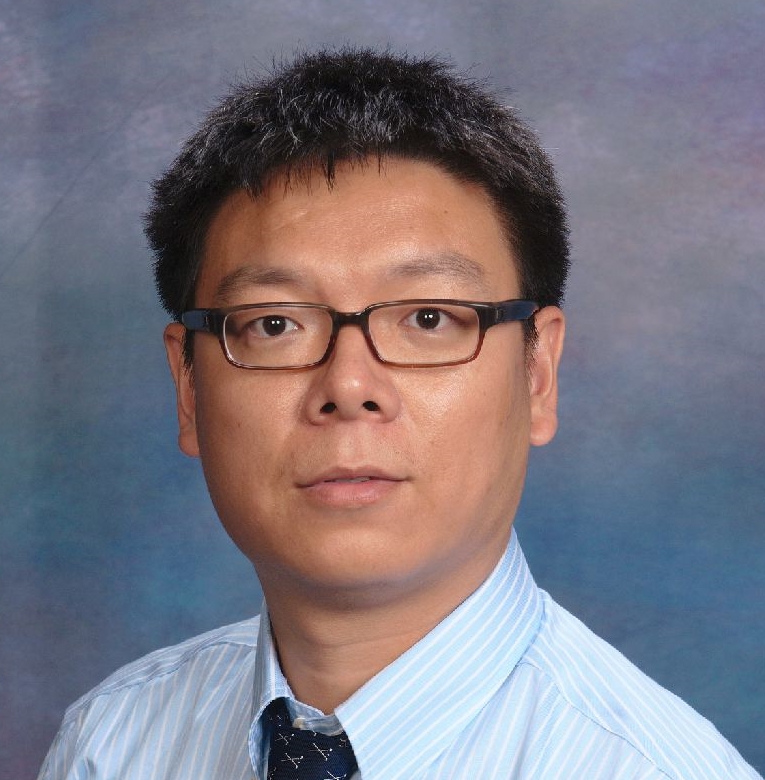Dr. Chen and the Shape of Things to Come

Even before he arrived at Stony Brook University nine years ago, Shikui Chen knew his way around the lab.
The mechanical engineer had studied at fantastic research hubs on two continents – at the Chinese University of Hong Kong, where he focused on automation and computer-aided engineering, and Northwestern University in Illinois, where he earned a Ph.D. in Mechanical Engineering in 2010.
Before joining the Department of Mechanical Engineering at Stony Brook University as an Assistant Professor in 2013, Dr. Chen had spent three years in the private sector, working in CAE software development for the multinational IT conglomerate Altair Engineering.
His work at Altair focused on topology optimization, a simulation-driven design method that considers everything from load sets to boundary constraints to optimize material layout in a given design space – thereby maximizing the performance of any constructed system.
The researcher’s knack for “predictive science-based design optimization” paid off: Altair released a beta version of his level-set-based topology optimization module in 2013, shortly before he joined SBU.
When he did, Dr. Chen knew immediately he was in the right place to expand his field of knowledge – including a deep dive into the mind-bending possibilities of 3D printing and other additive manufacturing technologies, where “design space is greatly expanded,” according to the professor.
“Design is no longer what it used to be,” he says. “It can be very organic – beyond the intuition and experience and imagination of even experienced engineers.
“So, how do we achieve these new designs? That is a great challenge.”
Stony Brook, particularly the Advanced Energy Research and Technology Center, is the perfect place to answer it, according to the engineer, a member of the American Society of Mechanical Engineers and the American Institute of Aeronautics and Astronautics. The work relies greatly on computer-simulation technology, perfect for the AERTC’s cutting-edge digital resources.
“We can accurately predict the performance or behavior of our engineering designs,” Dr. Chen notes.
In addition to the AERTC’s computer resources, the ready availability of other world-class scientific talent has proven especially useful – particularly for Dr. Chen’s collaboration with GE Renewable Energy.
“The [Advanced Energy Center] has provided many opportunities, including the initial collaboration between our lab and GE Renewable Energy,” he says. “We were very lucky to get involved in designing their next generation of wind-turbine generators.”
The work has also attracted contributions from Jon Longtin, the interim dean of the College of Engineering and Applied Sciences, and Empire Innovation Associate Professor Fang Luo, director of SBU’s Spellman High Voltage Power Electronics Laboratory.
“We have formed a great team to work on these big projects,” says Dr. Chen, who applauds the inherent scientific crossovers.
“It’s very beneficial,” he notes. “A project [like the GE Renewable] project is multidisciplinary, and everyone involved has a deep learning curve, so we learn from each other. We elevate each other.”
Also elevating the researcher’s work is the guidance of the AERTC leadership, which has been very supportive of Dr. Chen’s efforts.
“I meet with Program Manager Dr. Shruti Sharma every week,” he says. “Whenever we need support, they’re there to help us.”
That support will be critical as Dr. Chen expands his topology-optimization research into new areas, starting with the burgeoning science of e-mobility.
“This applies to anything that needs an electric motor,” Dr. Chen notes. “We’re trying to reduce the use of permanent magnets and increase the efficiency of electric motors and electric generators.
“We’re using these computers to create designs we have never even seen before.”
